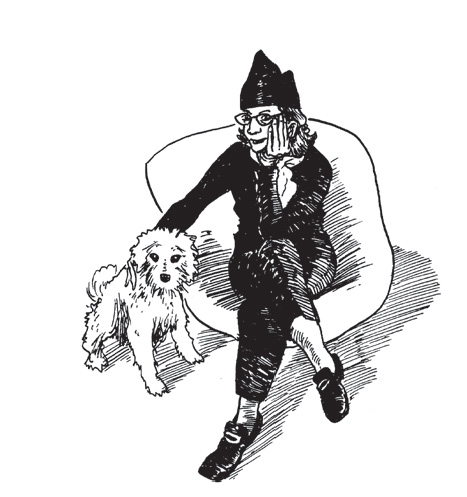Sixty-two-year-old artist, illustrator, writer, and designer Maira Kalman has had a remarkably productive decade. A retrospective of her art has been traveling the country, and she recently published her second graphic memoir, And the Pursuit of Happiness, a whimsical and personal look at the world of the founding fathers, which first appeared as a visual column in the Opinion Pages of the New York Times. In 2007, she published her first graphic memoir, The Principles of Uncertainty (also originally a column in the Times), and has illustrated Strunk and White’s classic The Elements of Style.You may also be familiar with the famous “New Yorkistan” cover for the New Yorker she created in collaboration with the artist Rick Meyerowitz, her numerous children’s books, and her work with Lemony Snicket, David Byrne, and Michael Pollan.
But before her current success, the Israeli-born Kalman had another life behind the scenes, as the influential graphic designer Tibor Kalman’s wife and collaborator. Maira is the M in Tibor’s seminal design firm, M&Co, and their marriage was a famously creative one, resulting in enduring and imaginative designs like a crumpled-sheet-of-paper paperweight, a wall clock empty of all numbers save the number five, and a black umbrella with blue sky and clouds on the underside. Their collaboration ended when Tibor died, in 1999, from non-Hodgkin’s lymphoma. Since then, Maira has established the strength of her voice on its own—a voice that dances between wisdom and innocence, lightness and tragedy, the personal and the external, and which draws inspiration across genres, from Saul Steinberg to Matisse to Nabokov to Bach.
With an unassuming attitude and a general affability, Kalman answered the questions I posed at her kitchen table in Manhattan, over glasses of water, on one of the hottest days of the year.
—Nell Boeschenstein
I. THE SITUATIONS AND THE STORIES
THE BELIEVER: You say you were a writer and poet before you thought of yourself as an illustrator. How did you come to combine elements of both? Did you feel as if the single genre was insufficient and limiting?
MAIRA KALMAN: I definitely thought that doing only one or the other was not sufficient to tell a story, and of course there were some precedents for people who write and draw together, from the Dadaists, and, before that, from books and illuminated manuscripts. For me, it was about editing the work down to the most pithy content and the most descriptive art—the most narrative art and the most visual writing—so I was able to tell my story in both those ways. And maybe part of me thought I wasn’t good enough at...
You have reached your article limit
Sign up for a digital subscription and continue reading all new issues, plus our entire archives, for just $1.50/month.
Already a subscriber? Sign in





